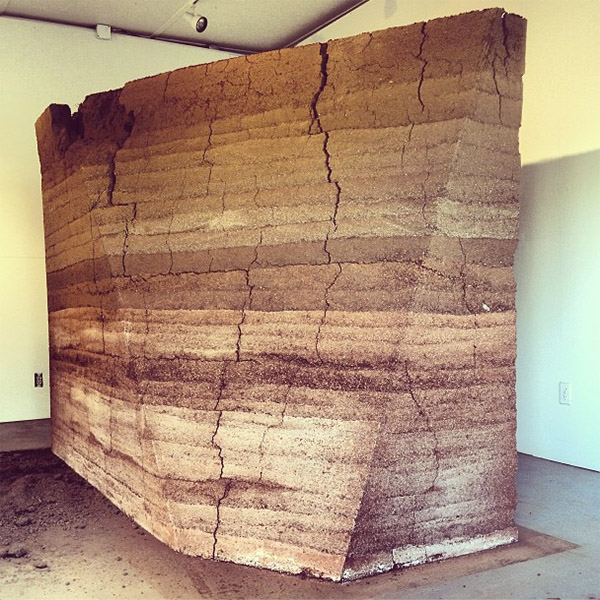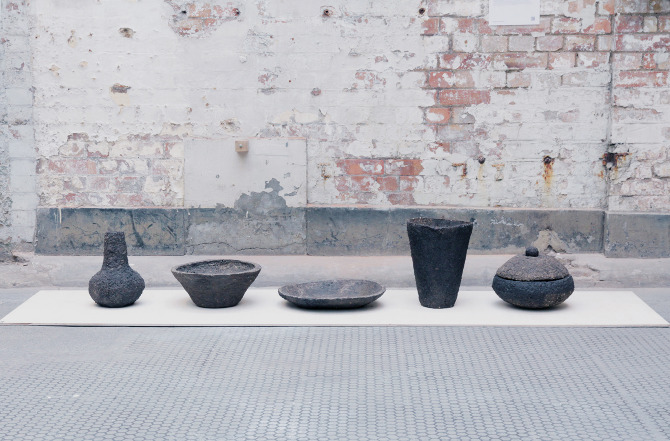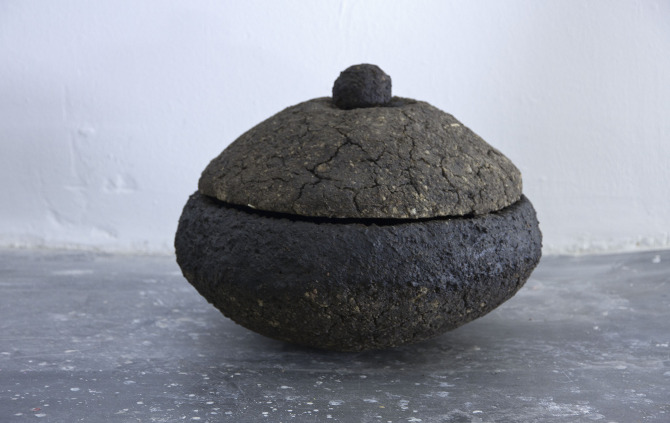Ricola Herb Centre

The Ricola Herb Centre in Laufen (Basel), Switzerland was designed in 2012 by renowned architects Herzog & de Mueron with a facade constructed by master clay builder Martin Rauch, the building is a high-volume long building with flat roof and façade built using the rammed earth. Façade elements made of compacted local clay sourced from the Laufen valley will form Europe’s largest loam building by 2014. From spring 2014, Ricola’s herb processing activities will be entirely carried out at a single location. Distinctive features of the brand new production building are high energy efficiency and state-of-the-art green building principles.

The new building reveals many aspects of Ricola’s strong commitment to its production location in Switzerland and at home in Laufen. Its self-appointed high goals for ecology and sustainability are consistently pursued: Logistics efficiency and the sensible use of resources are at the forefront for this project. The new building will be completely constructed using loam sourced from the Laufen valley. Lehm Ton Erde Baukunst GmbH (LTE), a specialist company based in the Vorarlberg alpine region in Switzerland, manufactures the prefabricated façade elements. Production is housed in a temporary hall in the neighboring town of Zwingen where LTE practices a newly developed procedure. No elements are used other than natural and organic earth from Laufen.
More information at: [ www.lehmtonerde.at/en/projects/project.php?pID=87 | www.ricola.com/en-ch/Meta/Media/Press-releases/Ricola-Herb-Center ]
Butabu: James Morris

Butabu is the online portfolio of the earthen architecture of Sub-Saharan Africa as photographed by James Morris and published in a book by Princeton Architectural Press 2003 and Electa 2004.
Casa Munita Gonzalez

Photo © Luis García
The Casa Munita Gonzalez by Arias Arquitectos and Surtierra Arquitectura is 275 sqm private residence built in Batuco, Santiago, Chile. The house is built using Terra-Panel to assure the thermal efficiency of the housing, which is constituted of panels of welded wire mesh filled of light earth that is supported by a main structure composed of beams and steel pillars.
Afghan Refugee Housing

Rai Studio and Architecture for Humanity Tehran, in collaboration with the Norwegian Refugee Council, have recently completed an adobe construction prototype intended for Afghan refugees living in Kerman, close to the centre of Iran.

Built in an Afghan Refugee Camp in Kerman, Iran, the 100 meter square meter domed shelter is comprised of approximately 6,000 mud bricks.

Pouya Khazaeli, principal of Rai Studio and architecture professor at Azad University, Tehran and Ghazvin, notes: “Social sustainability in design is our main focus area here. It means to study how these refugees live, communicate, the meaning of privacy in their live, which materials they prefer and use for construction, which kind of construction techniques they use themselves, how much they spend normally to construct their own shelters….”
Read more at Domus
Earth Prism
Architect Sean Connelly’s installation A Small Area of Land (Kaka‘ako Earth Room), a “temporary earth sculpture” made from 32,000 pounds of volcanic soil and coral sand, can currently be seen at the ii gallery in Honolulu, Hawaii. The sculpture is a prismatic monolith with dimensions 7′ tall, 9′ long, and 4′ wide, and it features a single sloping surface that aligns with the position of the sun and moon on a key date in the history of land in Hawaii.

Over the course of the exhibit, the sculpture slowly falls apart as Connelly wanted to see “what a version of this might look like in Hawaii, on Hawaii’s terms.”
Glendale Childcare Center

Located in Glendale, California, the 23,000 square-foot childcare facility, designed by Marmol Radziner, accommodates 236 children between infant and Pre-K ages. The complex is the first LEED Gold Certified building in Glendale, and is the largest rammed earth building in Southern California. The sustainable strategies incorporated into the building, including photovoltaic panel canopies and structural rammed earth walls, are key visual and tactile elements in the design, emphasizing the facility as both a learning environment and an educational tool.
Hassan Fathy’s New Gourna
Hassan Fathy’s New Gourna from Oliver Wilkins on Vimeo.
The village of New Gourna was designed and built in the 1940s by the Egyptian Architect Hassan Fathy. He pioneered the use of sustainable materials and environmentally friendly design to build housing for low income families who were being relocated from their original village at Old Gourna.
60 years later, many of the now historic New Gourna buildings have fallen into disrepair and others have disappeared or been changed beyond recognition. A project is underway to safeguard the site, and World Monuments Fund (WMF) commissioned us to produce a film presenting the perspective of the residents…
For more information about WMF’s work at New Gourna, see wmf.org/project/new-gourna-village
House No. 6

The Drachman Design Build Coalition, a non-profit organization at the University of Arizona’s College of Architecture + Landscape Architecture led by professor and Associate Dean, Mary Hardin, received grants from both the City of Tucson and Pima County in 2007 to fund the study, design and construction of affordable, sustainable homes for low-income families in south Tucson’s Barrio San Antonio. More at Archinect…
Radioactive Earth

These food storage jars were made of radioactive earth from the Fukushima Daiichi nuclear disaster area in Japan. They were designed by Royal College of Art graduate student Hilda Hellström who contacted the last person still living inside the evacuation zone, Naoto Matsumura, and collected soil from his rice fields that can’t be farmed due to contamination.

[ More at Dezeen ]
